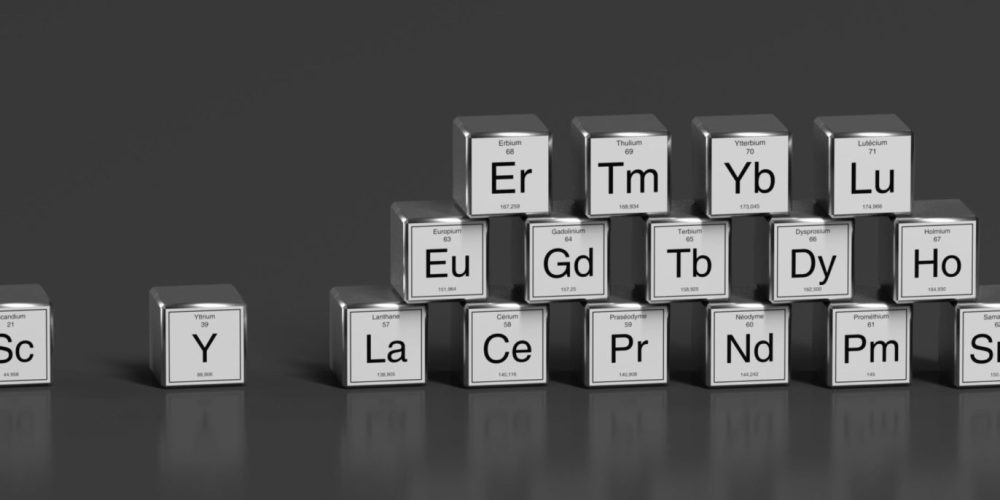Rare Earth Elements (REE) are still considered as one of the most critical elements for industrial use and green technologies. However, it is now well known that the group of 17 individual elements is as diverse as any other 17 elements of the Periodic Table. The pure chemical similarity of the REEs is confronted with an extreme physical diversity. Today basically only the magnetic materials are of interest and drivers for the REE market. Phosphors like Europium and Yttrium, which were the most critical REEs just a few years ago, are still required but the paradigm change by introducing LED technology led to a enormous reduction of demand for phosphors.
The magnetic materials are primarily Neodymium, Praseodymium, Dysprosium and Terbium. Other REEs like Gadolinium, Cerium and potentially some others are also used for specific magnetic alloys, their demand showed no decisive impact on the market and price. Electric motors have driven up the demand for Dysprosium in recent years but several producers and car makers managed to reduce the amount required and several companies are on track to develop REE free electric engines.
Issues
Irrespective of the uses of REEs, one decisive challenge is the environmental burden which is accompanied by REE mining. The environmental issues can be differentiated along the extracted ores: monazite, bastnaesite and ion-adsorption clays. Also, the geolocation of the present main mining areas in China determine specific environmental hazards.
Monazite usually contains radioactive ingredients like Thorium and Uranium. This turns only into a problem during refining, where the waste gets concentrated, i.e. also Thorium and Uranium become more concentrated. Refining usually takes place in Malaysia, where the population opposes the production and refining of REEs vigorously since years, though.
While radioactivity can be neglected with Bastnaesite, there are other major environmental threats along with its mining and refining. The major bastnaesite mine is located in the province of Inner Mongolia, China, from where the ore is transported down southwards to Baotou, a large city with more than 1 Mio inhabitants. The refinery is located at the western brink of the city, where prevailing winds from the west blow the exhausts with all their ingredients including heavy metal dusts, nitric oxides etc. over the city.
Another detrimental factor are the chemical wastes which are dumped into the worlds’ largest tailing ponds which measures some 4 km in diameter, where toxic aqueous wastes are stored. If the pond dries out, wind can blow the toxic dusts again over the city. Several studies proved an increased contamination of urban areas and initial chronic maladies have been reported. A partial forestation of the tailing pond has been suggested to use bushes and shrubs as wind breakers to reduce Aeolic denudation. A further problem of the tailing ponds are leakages through which toxic particles get into ground water levels and flow into the Huang He, the nearby river, leading to contamination of downstream agriculture.
Ion-adsorption clays occur in sub-tropic regions in Southeast China, which can only be accessed by forest-clearing. The clays themselves are put into process ponds measuring about 12m in diameter and a few meters depth. Here again chemicals are used to separate REEs from the clays. This process takes several months. Problematic again are leakages and ponds which are filled to the top so that during rainfall the ponds spill over and spread toxic wastes into the environment.
The figure below shows the global primary production of REEs. Some doubts persist, if these numbers are correct. It is probable that some illegal mining comes on top of these numbers. China is struggling to stop all illegal mining – in order to get more control over pricing but also to stop devastating illegal practices which harmed both the population and the environment.
Recycling of REEs, especially magnets and phosphors is theoretically possible, but due to subdued prices since months and partially years recycling is not economic. A phosphor recycling plant built in France was introduced in late 2015 and was closed early 2016 due to uneconomic conditions. The plant, obviously including patents, was sold to a Chinese consortium.
adapted from Dr. Volker Zepf
